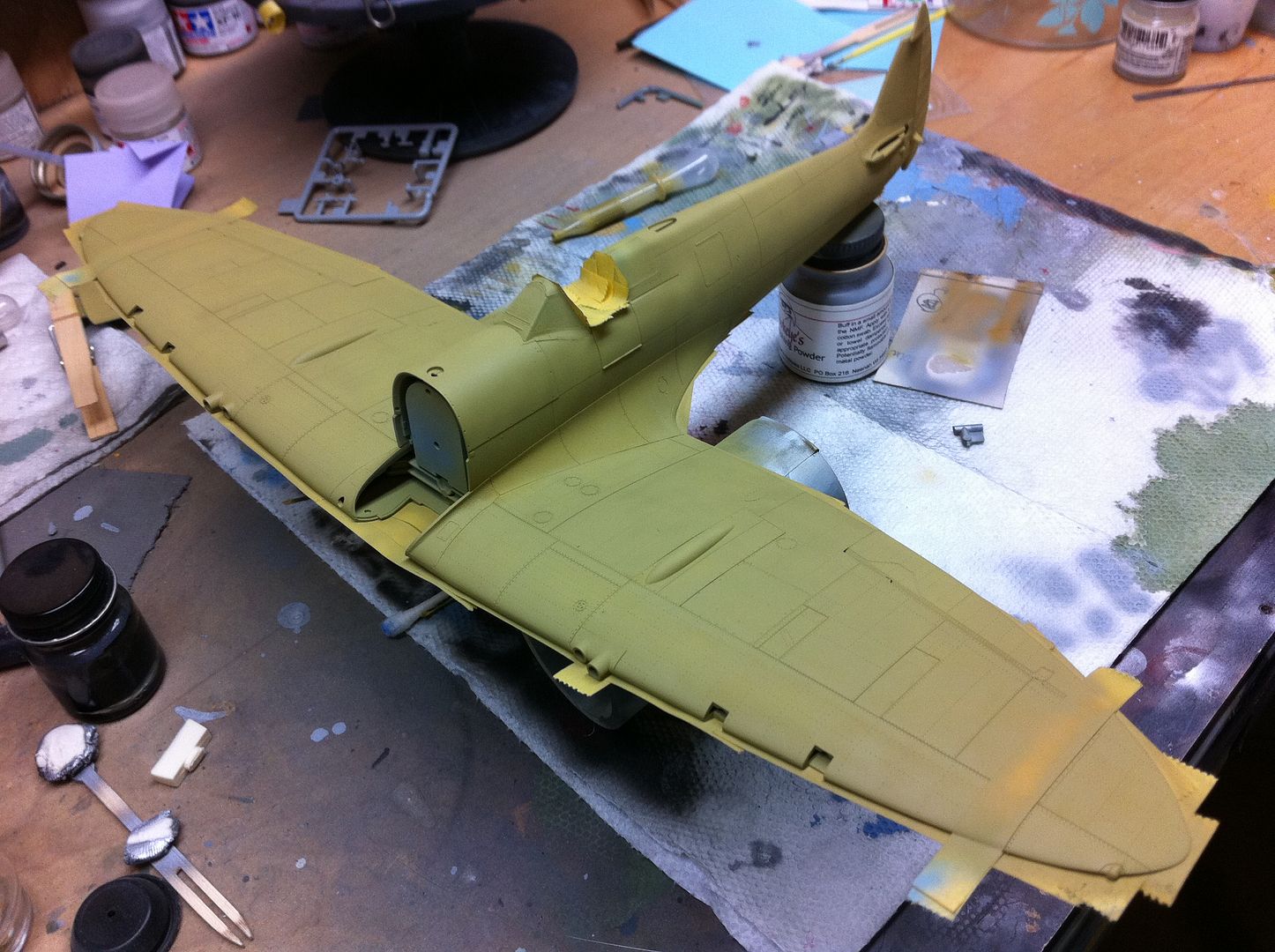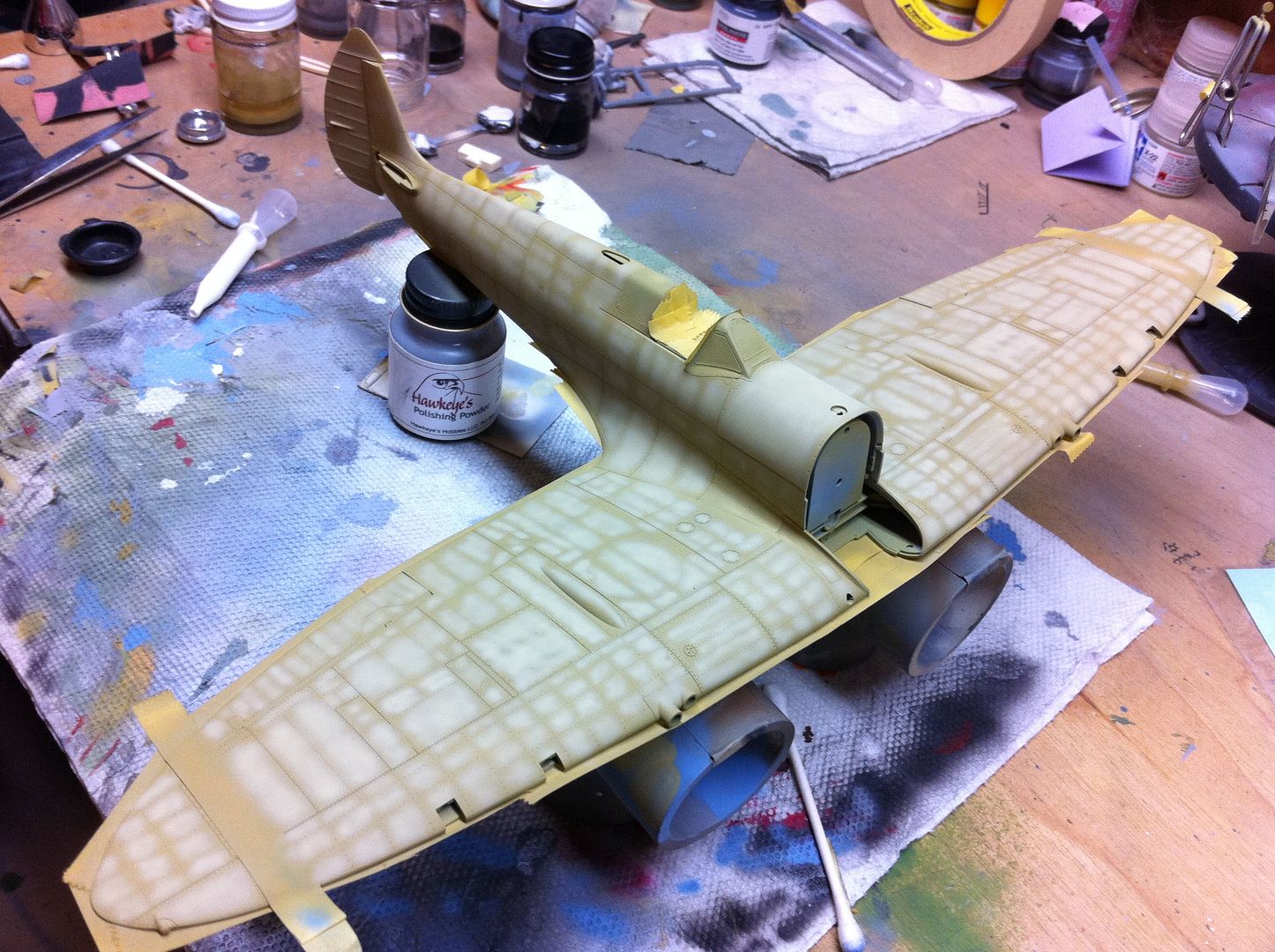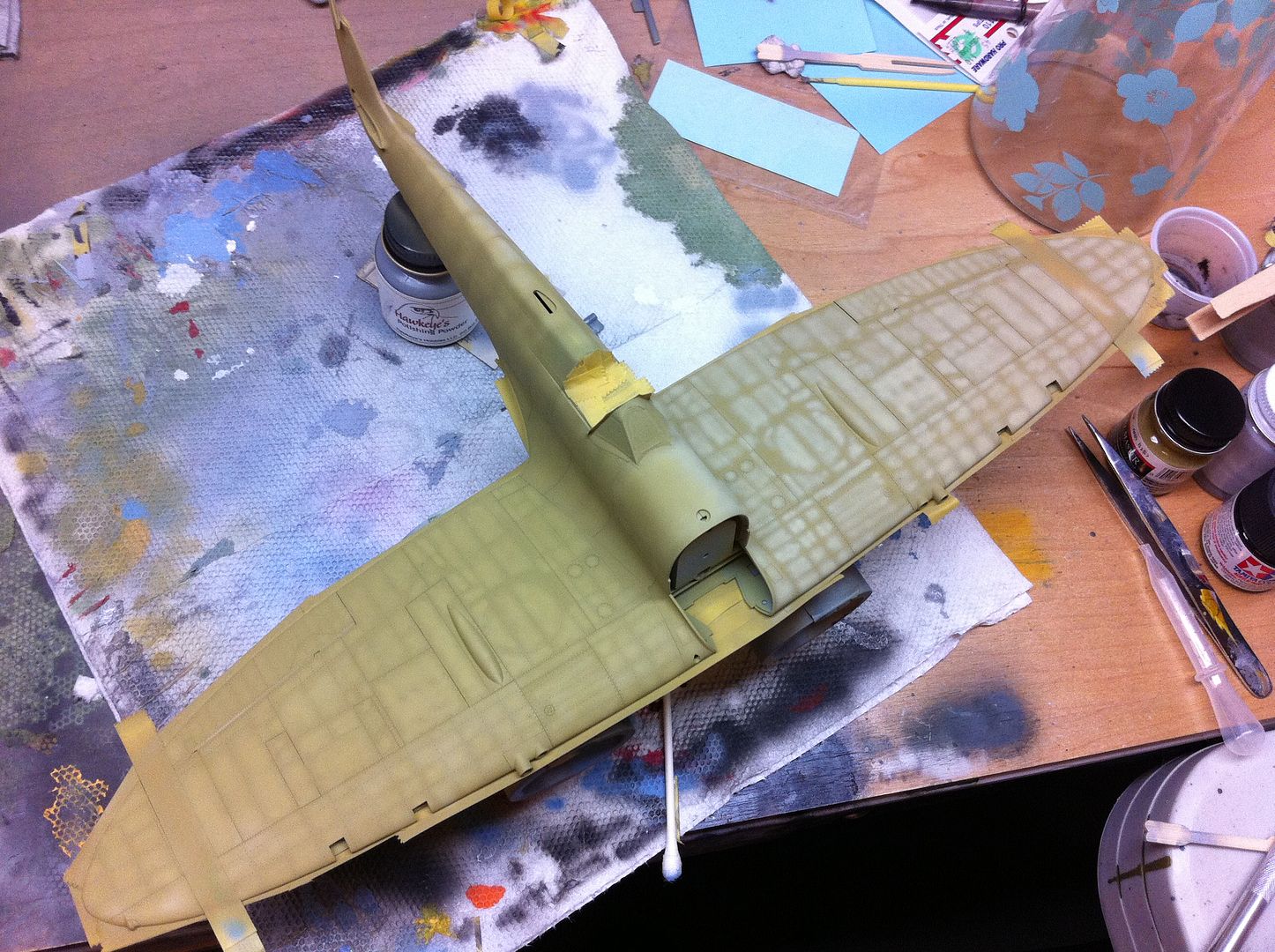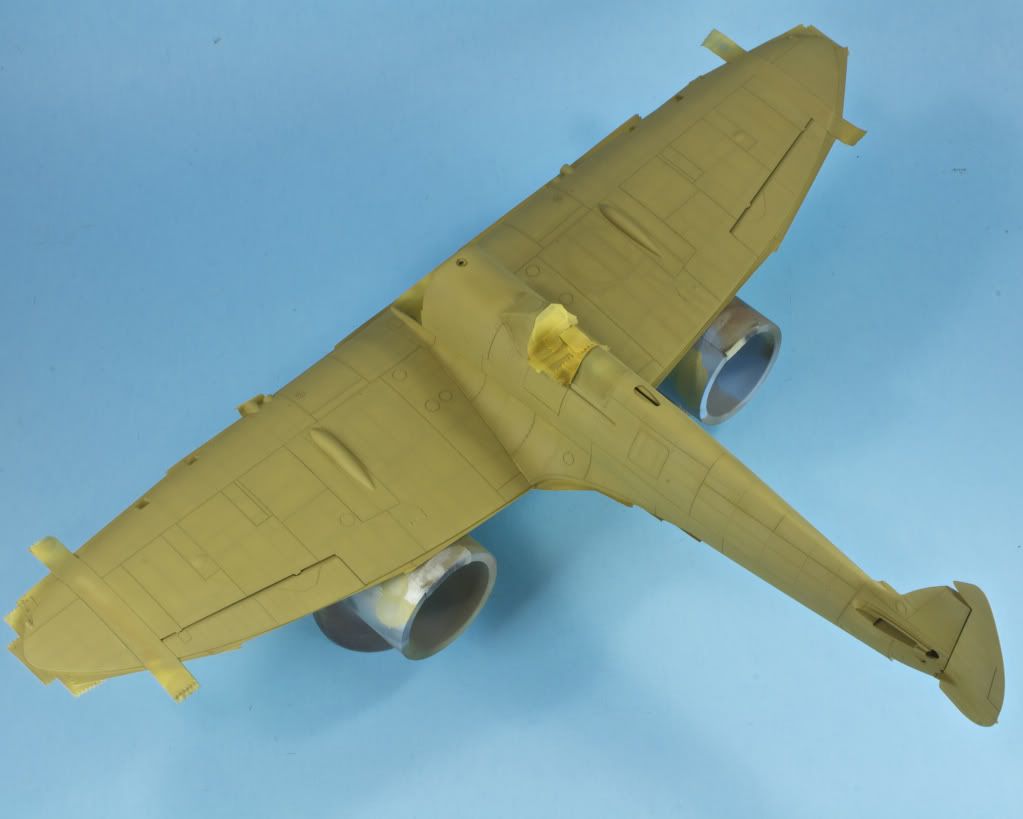I preshaded once. Never again. Such a giant pain, spraying all those fine lines (I wouldn't use sharpies either, I've heard horror stories of them bleeding through subsequent layers of paint).
I read an article on a blending technique I've since taken to calling the "three layer blend" back when I took up modeling again, and it's my preferred route. Similar effect to pre-shading, but a bit more subtle, and FAR more controllable.
Basically, it goes like this.
Step 1 - BASE COLOR

Step 2 - HIGHLIGHTS
Take your base color, and add anywhere from 25-50% white/light gray/light tan, depending on the color and how much of an effect you're after.
Spray this generally in the centers of panels and surfaces, avoiding panel lines. On fabric surfaces, you switch, so the raised detail gets the highlights.
When you finish this step, it'll look nasty.

Step 3 - BLEND
Go back to the base color. Thinned AT LEAST 1:4 paint to thinner. Go over the model in multiple passes. As you do, you'll see the color start to build back up and the nasty highlighted areas will start to blend back in with the overall paint job.

When you get to a point you're happy with, stop.

It's tough to use this technique for white, but it can be used for yellow pretty easily (though I never bother shading yellow since it's at most a wing stripe or something, and dirties up very well under washes anyway).